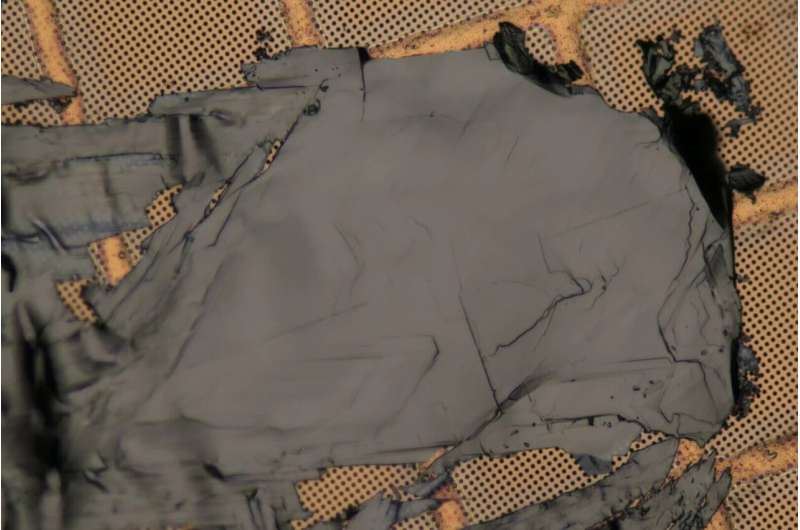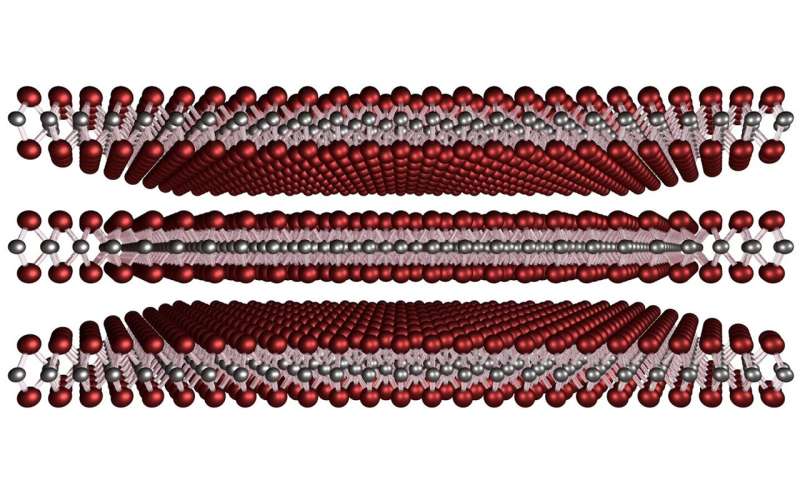This article has been reviewed according to Science X's editorial process and policies. Editors have highlighted the following attributes while ensuring the content's credibility:
fact-checked
peer-reviewed publication
trusted source
proofread
Laser pulse creates exotic order in quantum material

Water flows, ice is rigid—this clear difference between the liquid and solid state of substances is part of our everyday experience. It follows from the very regular arrangement of atoms and molecules in crystalline solids, which is lost when they melt. Less clear, however, is the structure of "liquid crystals"—highly interesting states that combine order and disorder in such a way that important applications such as LCDs (liquid crystal displays) are possible.
Researchers from the Max Planck Institute (MPI) for Multidisciplinary Sciences in Göttingen, in collaboration with colleagues from Kiel University (CAU), Deutsches Elektronen Sychrotron DESY and University of Göttingen have now successfully created a state in a crystalline material that—similar to the structure of liquid crystals—can be described as neither clearly liquid nor clearly crystalline.
The studied layered crystal, grown in Kiel by Kai Rossnagel's team, professor at CAU and leading scientist at DESY, is characterized by a minimal distortion of the crystal structure at room temperature. This is due to the special structure of the crystal, in which thin layers of metal and sulfur atoms are stacked on top of each other and only weakly bound.
If these layers are now bombarded with ultrashort laser flashes, the distortion changes its orientation within a trillionth of a second, abruptly increasing the electrical conductivity of the material. Although both types of distortions have an ordered structure and associated crystalline properties, a highly disordered state can be observed during the transition.
Short snapshot: State disappeared after nanosecond fraction
"After exciting the material with light, the atoms in the crystal structure have yet to find their new, slightly different positions. This transforms the material into an unusually disordered, so-called hexatic state," says Till Domröse, Ph.D. student at MPI and first author of the study now published in the journal Nature Materials.
"This state is otherwise mainly observed in liquid crystals. In our experiments, however, it is extremely volatile and has already disappeared after the fractions of a nanosecond." Making the hexatic state visible placed high demands on the measurement technology used. On the one hand, for example, a very fast temporal resolution is required to take a sufficiently short snapshot. On the other hand, the structural changes in the material are so subtle that they can only be seen with a very high sensitivity to atomic positions. Electron microscopes in principle provide the necessary spatial resolution, but are typically not fast enough.
In recent years, the Göttingen team led by Max Planck Director Claus Ropers has closed this gap by developing an "ultrafast" electron microscope capable of imaging even unimaginably rapid processes in the nanocosmos. "This microscope was also used in these experiments and enabled us to capture the unusually ordered phase and its temporal evolution in a series of images," Ropers explains. "At the same time, we developed a new high-resolution diffraction mode that will be essential for studying many other functional nanostructures."

Unique layered crystals
"The highly complex dynamics that take place in this type of layered crystal offer numerous scientific questions and possible applications," says Rossnagel, member of the speaker group of the priority research area KiNSIS (Kiel Nano, Surface and Interface Science) at CAU and lead scientist at the German Electron Synchrotron DESY in Hamburg. "The basis are fascinating network-like structures, which we can only develop and study in close collaboration with state-of-the-art research infrastructures such as at the MPI in Göttingen and DESY in Hamburg. This enables excellent research on quantum materials in northern Germany."
"The highly complex dynamics that take place in this type of layered crystal offer numerous scientific questions and possible applications," says Rossnagel, a member of the speaker group of the research focus KiNSIS (Kiel Nano, Surface and Interface Science) at CAU. "The basis is fascinating network-like structures that we can only develop and investigate in close cooperation with state-of-the-art research infrastructures such as at the MPI in Göttingen and DESY in Hamburg. This enables excellent research on quantum materials in northern Germany."
These special crystals have been grown in Kiel since the early 1980s. Close ties between CAU and DESY have existed for just as long, and are now institutionalized in the Ruprecht-Haensel Laboratory. "DESY's high-precision nanoanalytics with the PETRA III and FLASH facilities have contributed decisively to the high quality of our crystals and helped ensure that we receive enquiries from all over the world," Rossnagel continues. Studies like this one with the MPI in Göttingen, in which a novel state was discovered in a quantum material, also open up perspectives for future collaboration with DESY research groups to better understand new quantum materials.
More information: Till Domröse et al, Light-induced hexatic state in a layered quantum material, Nature Materials (2023). DOI: 10.1038/s41563-023-01600-6
Journal information: Nature Materials
Provided by Kiel University





















